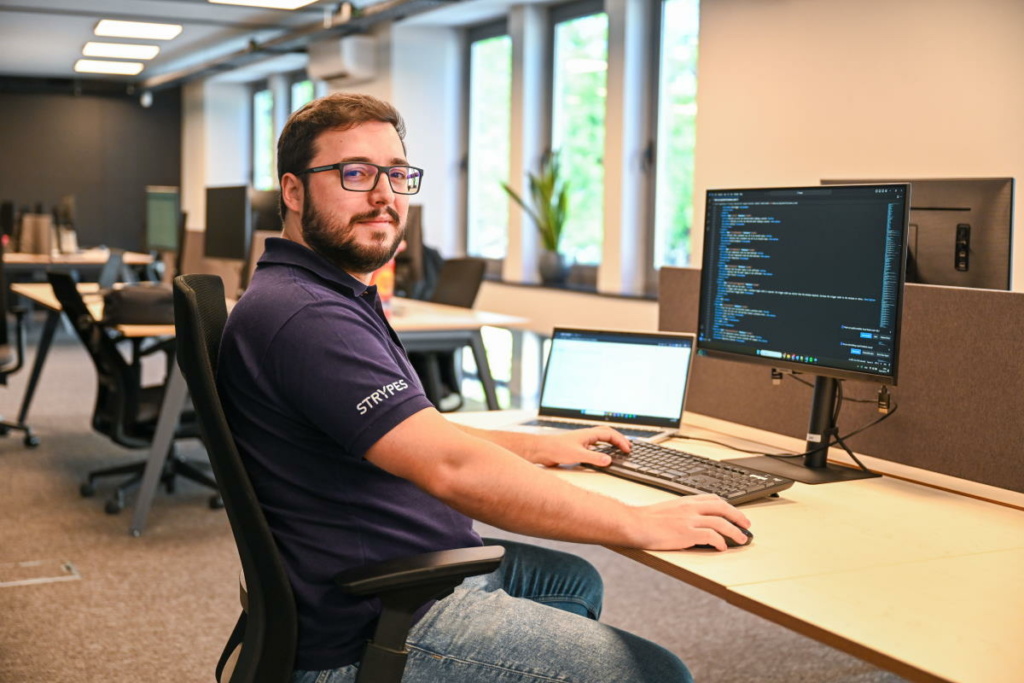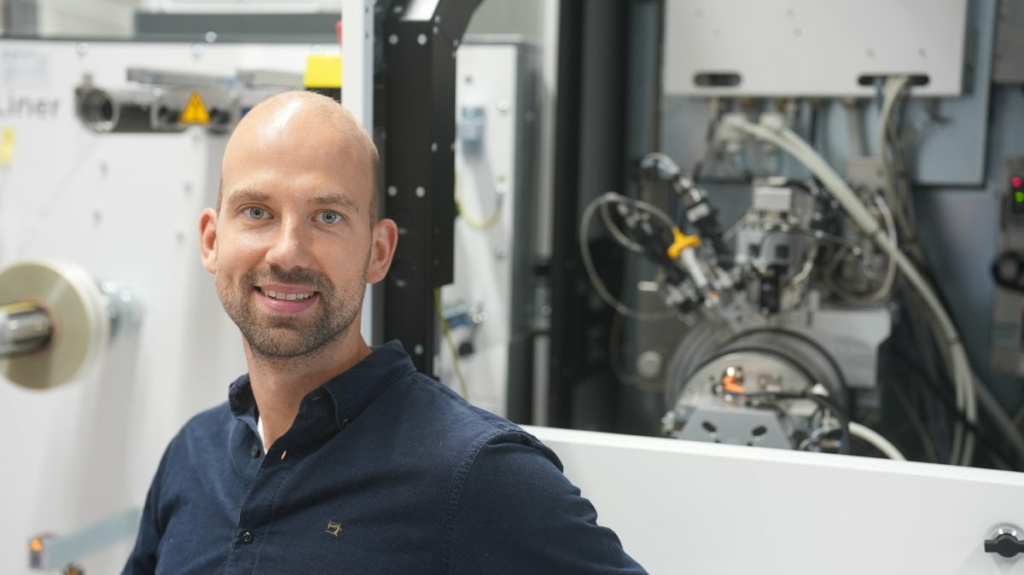Your cart is currently empty!

Turning feelings into frameworks
In a relatively short period, Strypes Portugal grew very fast. This meant that a new generation of project leads had to push the software development company forward. It asked High Tech Institute to host a four-day in-company training course in Porto to sharpen their leadership skills. “Our project leads had the right energy but lacked formal leadership training. This course gave them that.”
When software engineer Miguel Barros joined Strypes four years ago, it was a very different company than what it is today. “I was the sixth employee here in Portugal,” he remembers. “At this stage, the company was quite small. That, however, quickly changed.”
Barros currently works as a project lead. “But when you work at a company that grows this fast, you learn to do everything,” he says. “You end up taking on a lot of responsibilities. During my time here, I did everything from changing coffee filters and working on branding and marketing, to now coordinating large software projects.”
“My role at Strypes is to supervise projects and people,” Barros says. “I’m responsible for a couple of projects. I make sure that they’re on the right track and that the customer is happy with our performance. Today, I have a strong coaching role.”
Technology leadership
Because Strypes grew so fast in Portugal, the company wanted to improve the leadership skills of its project leads. Many of them were technical experts who didn’t have any formal leadership training. That’s why Strypes turned to High Tech Institute, which hosted the course “Leadership skills for architects and other technical leaders” in Portugal on just that topic.
“Project leads already have good people skills, otherwise they wouldn’t be in that role,” notes Barros. “But we wanted to reinforce this. We wanted to give them the tools for dealing with people and show why they work. The project leads already had the right energy but lacked the formal training. This course gave them that. It taught us some tools to navigate the responsibilities we face as leadership figures at a technology company.”
For Barros, the course put a name to things he had been doing all along without realizing it. “I already do things like talk to stakeholders and give feedback to colleagues. I just do it organically. After this training, I had a framework I could base myself on.”
This is very helpful for someone like Barros, who also needs to teach others what he knows. “Sometimes you do something naturally, but you don’t know why it works well,” he explains. “That makes it hard to explain to others how to do the same thing. These tools allow you to understand. Now I can point them to frameworks and tools.”

Feedback
During the training, the participants could discuss practical cases. “The trainer made a big effort to use real-world examples,” says Barros. “We were always talking about real issues. If we had a problem in our team, we could discuss it, and learn how to solve it. The course was very focused on practice.”
One focus area was feedback. “After taking the course, I started giving feedback differently,” Barros clarifies. “I learned how to respond critically to a person’s work without hurting them. That’s a valuable skill I’ll probably use for the rest of my life.”
The course proved particularly valuable for younger project leads. “These are people who got promoted after we saw potential in them,” says Barros. “They know a lot about the technical side of their job, but they need to learn how to deal with certain social problems and communication issues. That’s what the training did very well.”
This fits into Strypes’ philosophy of having technically trained managers. “That’s very important at our company. In other companies, you often see a disconnect between project leads who don’t have a technical background and just manage Excel, and the technical people below them. We want to have project leads who can do the technical things but also have good people skills and can support their team.”
Diving deeper
The course took four days in total, divided into two sessions of two days each. Barros: “It took place in our office in Porto. There we gathered all our Portuguese project leads, which was an interesting experience in itself. It was almost a team-building exercise.”
In between the two sessions, there was a break of a few months. During that time, the participants could experiment with some of the things they learned. “We had about three months to apply what we learned”, says Barros. “We even created a buddy system, where each of us kept track of another participant. We could discuss together how we were using the tools, and which ones were particularly helpful to us. This way, you don’t forget about what you learned after a few weeks. During the second session, we reported on our experiences to dive deeper.”
Looking back on it now, Barros is very positive about the training and what he learned from it. It helped him become a better leader and it helped Strypes operate more smoothly. “When you take one of these courses, there’s always skepticism,” he concludes. “You ask yourself: “Will I actually use any of this in real life?” In this course, that was different. It was highly practical and the trainer knew the culture of Dutch tech organizations very well. The things we learned really made a difference.”
This article was written in close collaboration with High Tech Institute. Main picture credit: Nuno Vasco/NVStudio


